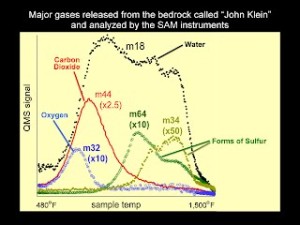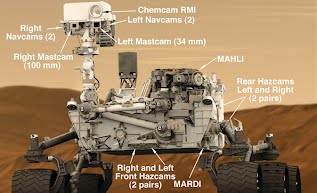by: Nicole Willett
The definition of what life is has eluded scientists for many generations…
This is partially due to the many extreme organisms that have been found that push the traditional boundaries outward in every direction. What is a virus? It can reproduce, but it is considered not to be life because it must have a host to reproduce. Does size matter? Can something be too small to be alive? There are bacteria that are smaller than viruses. Can something be too big to be alive? Recently, I have heard scientists debating whether the entire universe is a living organism. In order to come up with a definition we must describe what elements are needed for life as we know it to exist. We must also decide whether or not water is necessary and in what state. Can organisms live in soil with a high or low pH content? Are there energy gradients available for an organism to utilize the chemicals available for metabolism? What temperatures can life survive at?
 All of these questions must be addressed before scientists come up with a true definition for life. A simple definition of life from dictionary.com states, “the condition that distinguishes organisms from inorganic objects and dead organisms, being manifested by growth through metabolism, reproduction, and the power of adaptation toenvironment through changes originating internally.” This definition may work for laymen but when it comes to the plethora of extreme organisms we are finding now and with the search for organisms on Mars, we need a much more specific definition. As with all things in science, we have had a hard time getting everyone to agree on a true definition.
All of these questions must be addressed before scientists come up with a true definition for life. A simple definition of life from dictionary.com states, “the condition that distinguishes organisms from inorganic objects and dead organisms, being manifested by growth through metabolism, reproduction, and the power of adaptation toenvironment through changes originating internally.” This definition may work for laymen but when it comes to the plethora of extreme organisms we are finding now and with the search for organisms on Mars, we need a much more specific definition. As with all things in science, we have had a hard time getting everyone to agree on a true definition. Some things to consider are the six required elements necessary for all life on Earth thus far. Biologists like to call it CHNOPS.
That acronym stands for is Carbon, Hydrogen, Nitrogen, Oxygen, Phosphorus, and Sulfur. Interestingly, the Curiosity Rover’s SAM and CheMin instruments found CHNOPS in their latest sample of the rock called “John Klein” that was drilled recently. These results can all be found on NASA and JPL websites. Another interesting find is methane in the forms of chloromethane and dichloromethane. These are widely reported as “simple organics” in the press. These molecules were also found at the “Rocknest” site in an earlier soil sample taken by Curiosity. The discovery of organic molecules is the pièce de résistance that we have all been awaiting. Organics in general refer to something that was at one time alive or is alive now. We know from studying life forms on Earth that methane is a common organic molecule that is a waste product of bacteria and macro organisms. However, about 10% of methane on Earth is a result of geological activity. The rovers and orbiters have not detected any macro organisms, but scientists are diligently looking for evidence of an environment conducive to microorganisms.
 Again the scientists caution that these results may be contaminants from Earth. But, this seems to be a pattern. Mars scientists are repeatedly confirming and reconfirming the presence of water on Mars. Also, they are stating and restating the potential habitability of Mars. Dr. John Grotzinger, project scientist for the Curiosity mission, went so far as to state, “”We have found a habitable environment. The water that was here was so benign and supportive of life that if a human had been on the planet back then, they could drink it.” Wow, that is quite a statement. Not only are NASA scientists stating that Mars was habitable they are stating that humans could have consumed the water that sat and flowed on the surface of the Red Planet. Think about the potential ramifications of that information.
Again the scientists caution that these results may be contaminants from Earth. But, this seems to be a pattern. Mars scientists are repeatedly confirming and reconfirming the presence of water on Mars. Also, they are stating and restating the potential habitability of Mars. Dr. John Grotzinger, project scientist for the Curiosity mission, went so far as to state, “”We have found a habitable environment. The water that was here was so benign and supportive of life that if a human had been on the planet back then, they could drink it.” Wow, that is quite a statement. Not only are NASA scientists stating that Mars was habitable they are stating that humans could have consumed the water that sat and flowed on the surface of the Red Planet. Think about the potential ramifications of that information. As the scientists, go over and over the information from Mars, they continue to make amazing discoveries. Another significant find is the electrochemical gradient of the different molecules found inside of the John Klein rock. An electrochemical gradient is another important piece of the “life on Mars” puzzle because life forms use these gradients to move ions across membranes in order to perform many metabolic and other biological functions. Some of the molecules found in the rocks have different electric charges; some are more oxidized than others. This was cleverly illustrated at last week’s press conference. Dr. Grotzinger held up a battery to demonstrate the way rock eating microbes utilize the energy gradients formed by molecules, such as sulfates and sulfides, to their advantage in their metabolic processes. This finding has extraordinary implications if everything that has been reported remains true.












